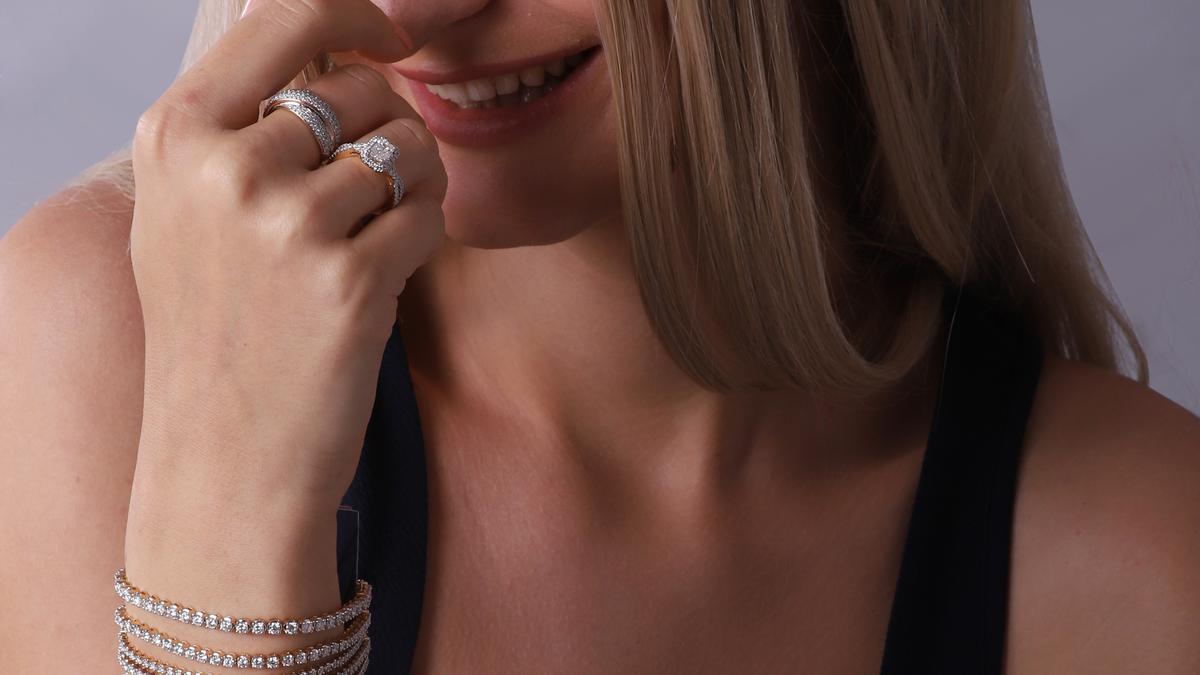
India’s lab-grown diamonds: how they are faring
“This one is a conversation starter,” says Vinaya Gupta. Pushing her wavy burgundy hair back, she reveals a delicate pair of earrings. A cluster of small, brilliant-cut diamonds is set in a pattern that looks like a mini constellation. “They are gem quality, but lab-grown, planet positive and purse accessible,” says the 27-year-old entrepreneur shopping at Avira Diamonds, a swanky store that displays jewellery made of lab-grown diamonds (LGDs) in Chennai.
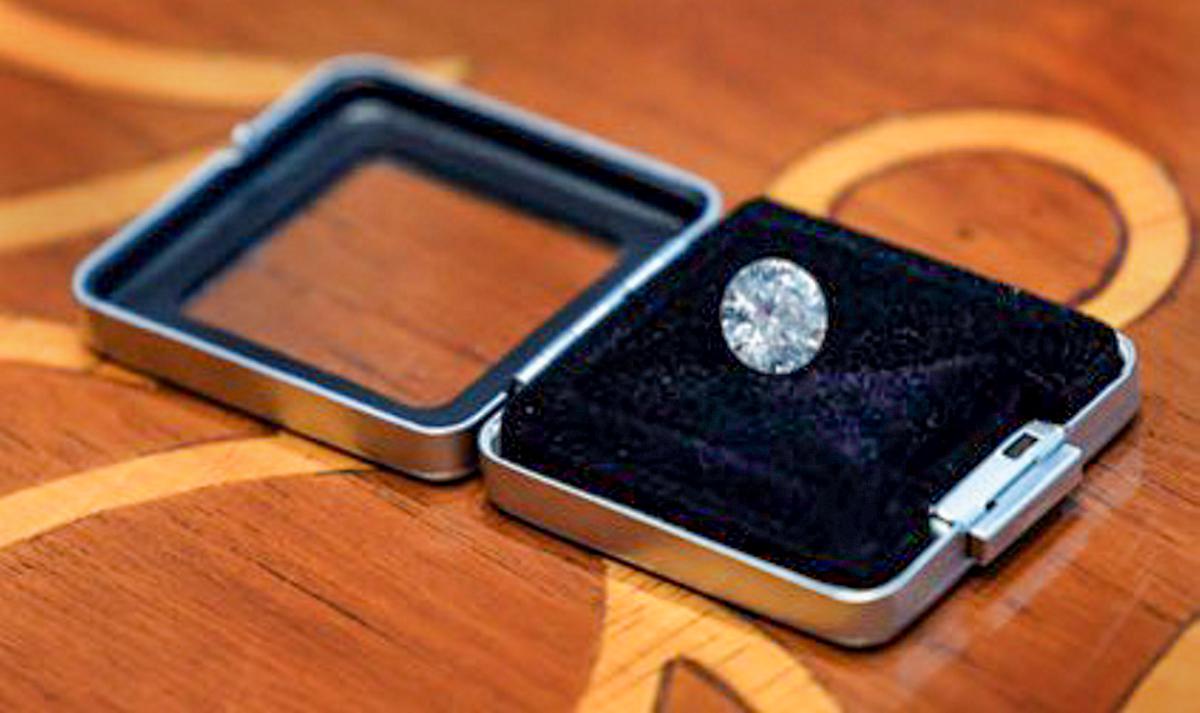
A 7.5-carat lab-grown diamond, gifted by Prime Minister Narendra Modi to US First Lady Jill Biden
| Photo Credit:
PTI
Like Vinaya, many millennials see LGDs not as a substitute, but as a practical alternative. Even celebrities such as Rihanna, Lady Gaga, Emma Watson, Penelope Cruz and Deepika Padukone, Duchess of Sussex Meghan Markle and conservationist Bindi Irwin have supported this democratic detour of the diamond business.
Recently, Prime Minister Narendra Modi gifted a 7.5-carat diamond grown in a lab in Surat to US First Lady Jill Biden during his state visit to Washington.
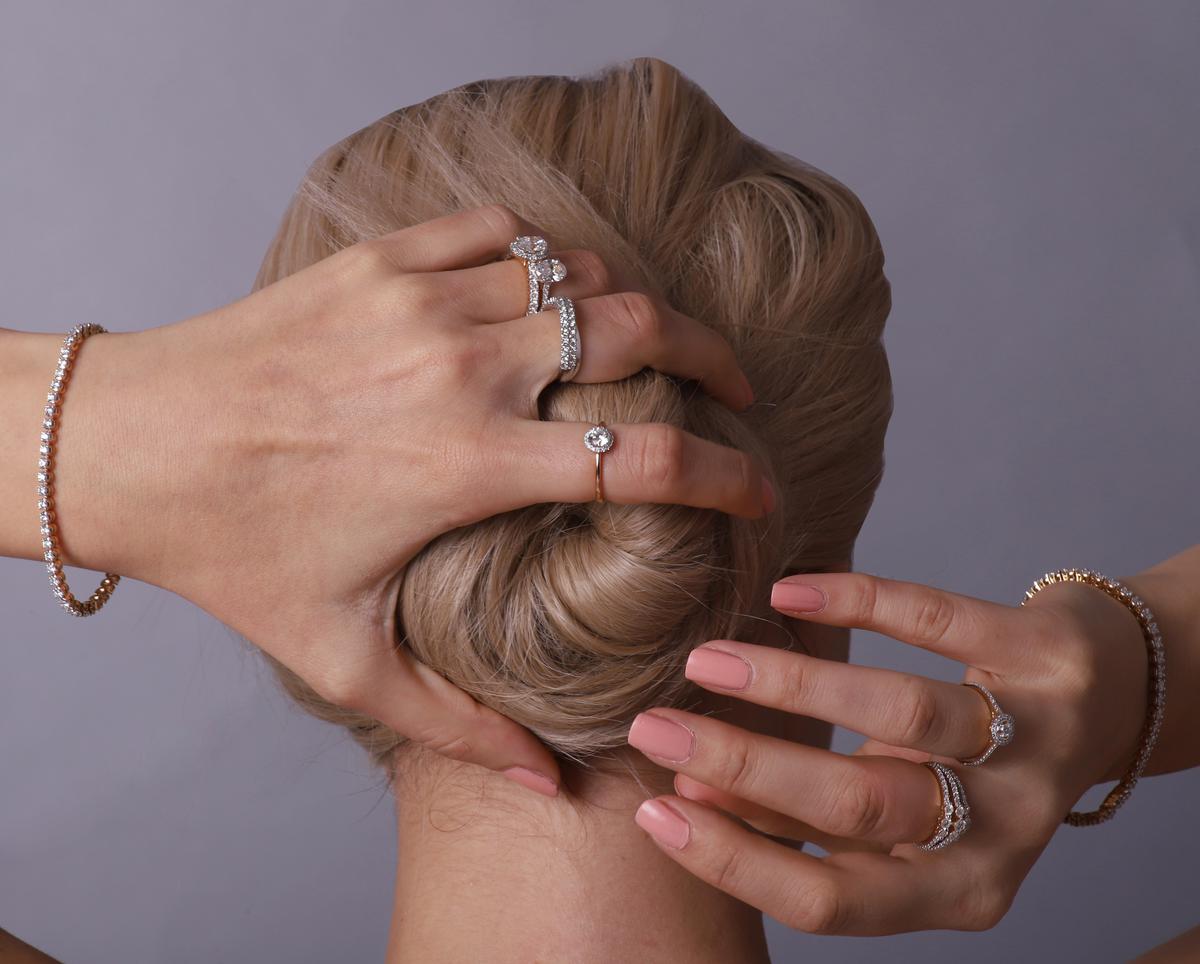
Rings by Aukera.
A viable alternative to their billion-year-old, naturally-formed counterparts mined from the depths of the earth, LGDs are now getting more popular with conscious consumers, fledgling jewellery brands and even some traditional diamond firms.
“The diamond industry is in for disruption. A storm is brewing. A growing aspirational class with a thoughtful and progressive mentality is supporting the LGD trend. It’s the perfect time for a brand like Aukera,” says its founder Lisa Mukhedkar.
She adds, “I always wanted to buy a pair of solitaire studs. Over the years, diamond prices soared, and the dream remained elusive. Finally, I chanced upon a lab-grown two carat certified piece. It exceeded my expectations on the 4Cs of diamond — carat, colour, clarity and cut. This is the story behind the six-month-old Aukera’s launch. Aukera in Basque means ‘choice’. I think LGDs are about sensible choices.”
The transition of LGDs from the lab to the lookbook was waiting to happen for many years. First, the diamond industry was unwilling to dilute and democratise its business. Second, there were purists who cried foul over the introduction of mass-produced ‘faux-real’ stones into a market they perceived as exclusive. But there was no stopping LGDs.
“They are regarded as the future of the industry. Depleting mining resources, increasing demand, skyrocketing prices and serious environmental and ethical concerns are gradually driving customers to the LGD market. The highest demand comes from millennials who pronounce their love with affordable solitaires and prefer them for their trousseau too,” say brothers Karamjyot Chawla and Sarabjyot Chawla of House of KaSa.
“Convincing customers about LGDs initially wasn’t easy. People perceived them as cubic zirconia or even fake stones. But as awareness about their quality, affordability and environment-friendly nature spread, there has been a significant shift in customer preference that’s reflected in the increasing sale of LGDs,” says Karamjyot.
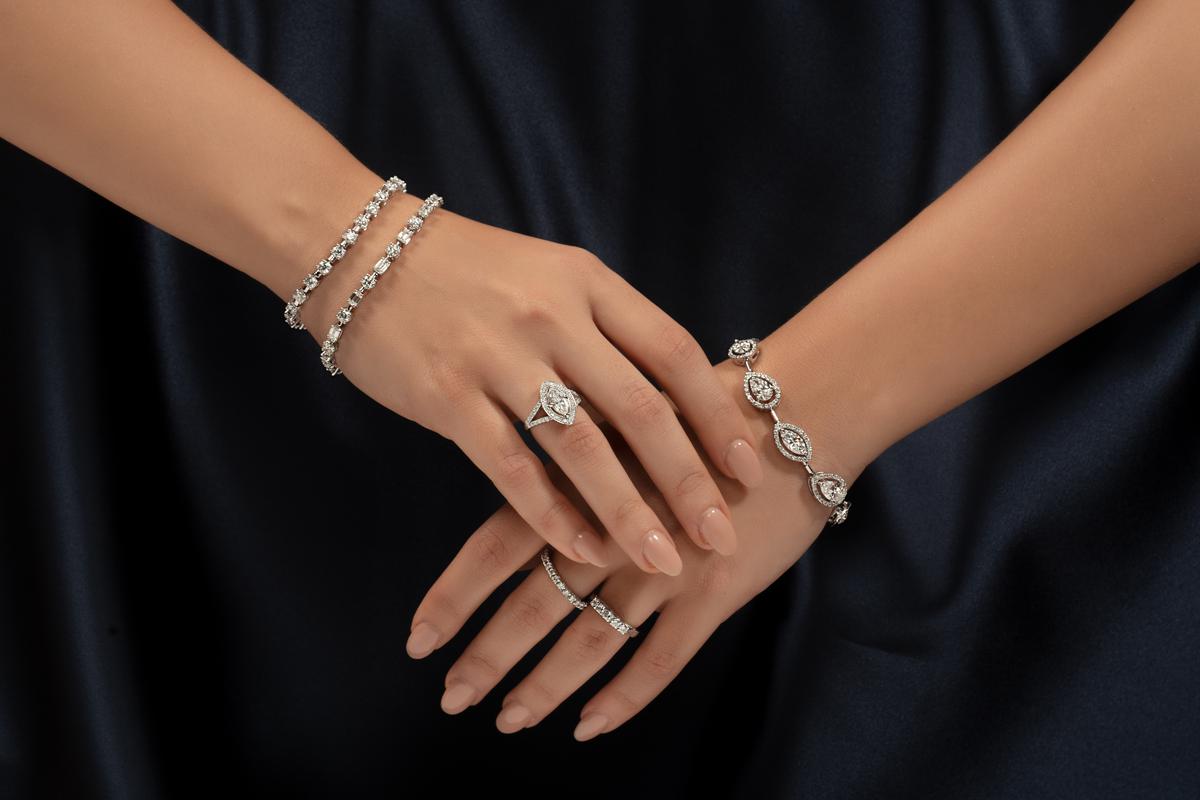
Jewellery from the House of KaSa.
The big plus in today’s context according to brand promoters, is their environment-positive impact. It is the key differentiator that makes them appealing to a generation raised on issues relating to sustainability and climate change.
These man-and-machine-made stones are manufactured in a process that mimics natural mining inside a controlled laboratory environment. Carbon seeds are planted in chambers and subjected to intense heat/pressure that stimulates the geological process by which diamonds are formed.
What takes billions of years to form naturally is produced within a few weeks in the labs. Hence lab diamonds can be produced without upsetting ecologies, and by promoting socially responsible labour practices and turning to renewable energy sources. And yet, the human eye cannot distinguish them from natural gems in terms of physical, chemical, optical and aesthetic features.

According to brothers Karamjyot Chawla and Sarabjyot Chawla of House of KaSa, the highest demand comes from millennials.
Say Aishwarya Guptha of Wondr Diamonds, “LGDs are green diamonds. We call them sustainable luxury. The world is moving towards conscious living, and they align with that philosophy.” Aishwarya adds, “Having said that, we don’t think they pose any challenge to the mined diamond market. They are only going to increase the choice for customers with their variety and affordable pricing.”
Since most LGD brands offer certification and hallmarking, besides attractive buy-back and exchange policies, there is ease in the business. Bhavani Prakash, a chartered accountant, shopping for her trousseau is excited by the range available in the market today.
She says, “When I decided to sidestep tradition and go for LGDs, my mom wasn’t happy. I think it’s a generation thing. To her, diamonds are a sentiment. To me, the ethos behind LGDs and their affordability override everything else. Besides, in addition to the 4Cs, I also get certification.”
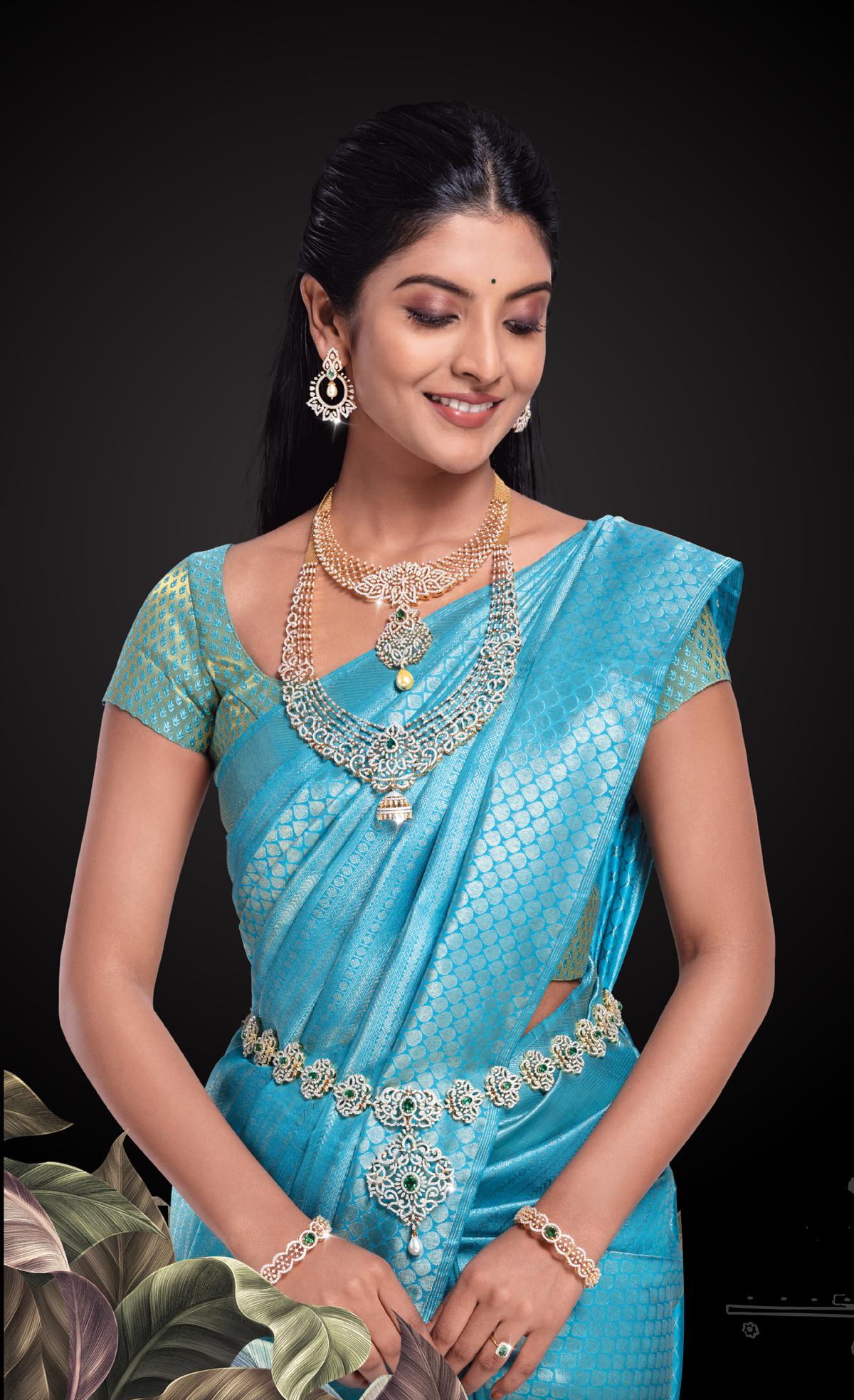
A model in a collection by Wondr.
What is adding sparkle to the LGD market is the range. From traditional maang tikkas, chunky chokers and statement solitaires to designs inspired by geometry that can instantly elevate everyday wear, there is a lot on display at the brick-and-mortar and online stores.
Many brands also offer bespoke pieces and encourage create-your-own jewellery concepts. When it comes to price points, LGDs act as diffusion lines. Depending on the brand, they are anywhere between 30 and 50% cheaper than mined diamonds.
“The market is still nascent, but holds enormous potential. And the timing couldn’t be more perfect,” asserts Lisa , who plans to launch Aukera’s first Diamond Experience Centre in Bengaluru soon.
Providing clarity on the LGD vs natural stone business, Amarendra Vummidi of Vummidi Bangaru Jewellers, says, “LGDs are surely meant to be planet-friendly. Right now, there are only a few active diamond mines — probably less than 15 across the world. So in my opinion, the environmental impact of mining diamonds is going to be negligible compared to the LGD industry where environment-concern claims remain a big question.”
Amarendra adds that since “economic activity has slowed down in the U.S, Europe and China, companies have turned to LDGs as an alternative for work — not as an answer to the diamond industry itself.” He continues, “Besides, they are cheap. Though LGDs look as good as their mined counterparts, we are still not sure how their composition and structure could change over the years. Diamonds are heirlooms, passed on from one generation to the next. Even if it’s a small stone, families would prefer to pass on a mined gemstone instead of a lab-grown one. Their value remains unquestionable. Though they look similar to the naked eye, it’s possible to detect synthetic diamonds with equipment.”
Also Read | Diamond city in distress
As tech-produced diamonds try to steal a march over the gemmological natural wonders, environmental advocates continue to call out on greenwashing attempts.
Not all LGD brands use renewable energy sources. Labs require huge amounts of power to grow diamonds, and there is little or no transparency about the sustainability claims. Nevertheless, whether all that glitters is green or not, lab grown diamonds are enjoying their moment under the spotlight.
Forget the Crazy Rich Asians. Now a lot more people can dive into this new democratic bling empire.
The bloody truth of the diamond trade
Blood Diamond (2006) starring Leonardo DiCaprio and Djimon Hounsou in the lead, sparked public debate over the dark side of the diamond trade. Its brutally honest take on conflict diamonds or blood diamonds mined in war zones in Africa and sold illegally to fund insurgency and provoke human rights violations, created awareness among a wide audience about the way the pricey gems enter world markets. It changed public perception about the origin of diamonds and led to consumers making informed choices about the traceability of the stones through authentic certification. After the film’s release, DiCaprio turned into a vociferous advocate of ethically-sourced diamonds, and even invested in Diamond Foundry, a San Francisco-based company that produces environmentally-sustainable LGDs using solar-powered technology.
Stay connected with us on social media platform for instant update click here to join our Twitter, & Facebook
We are now on Telegram. Click here to join our channel (@TechiUpdate) and stay updated with the latest Technology headlines.
For all the latest LifeStyle News Click Here
For the latest news and updates, follow us on Google News.

